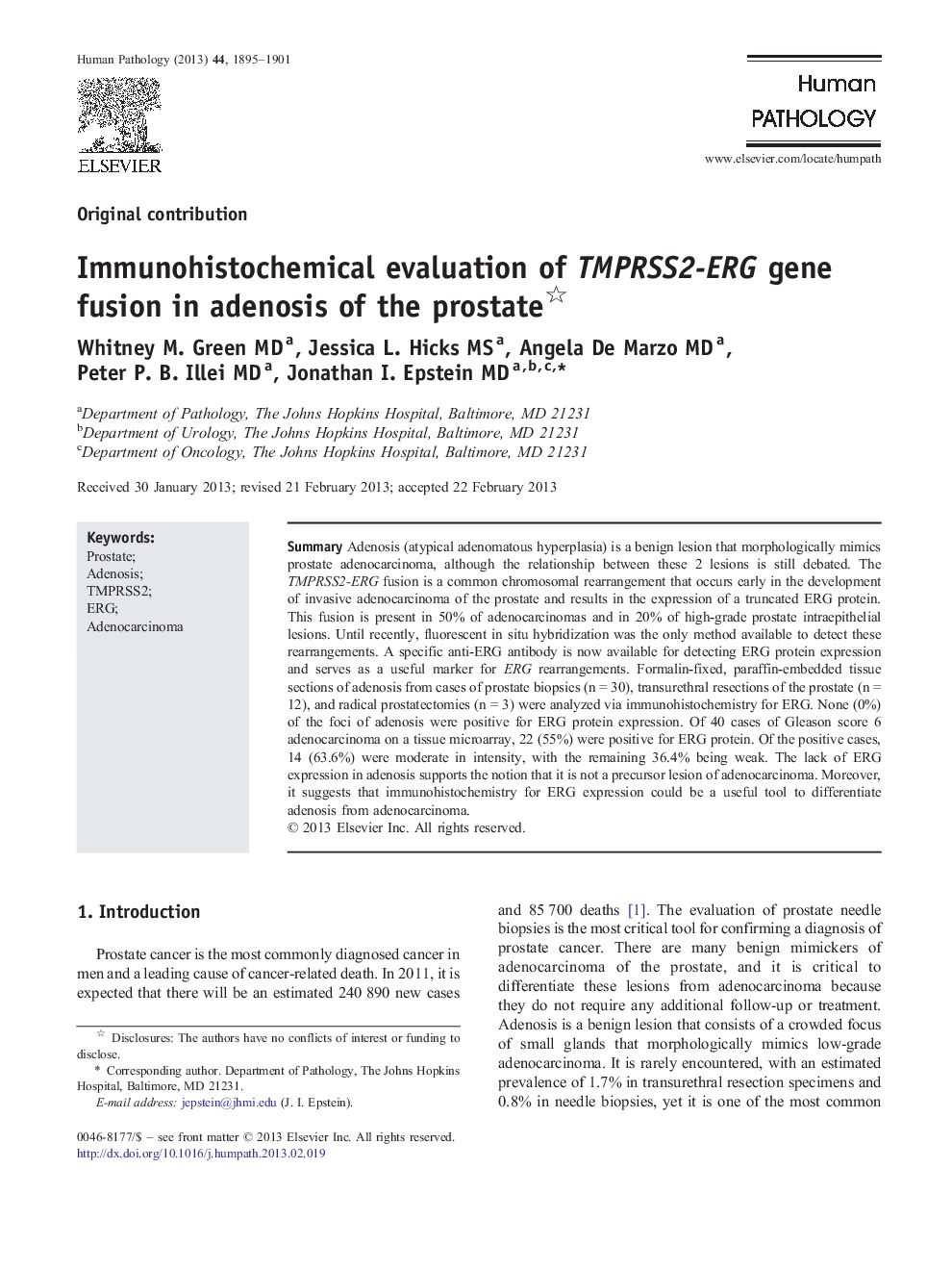| Article ID | Journal | Published Year | Pages | File Type |
|---|---|---|---|---|
| 4133036 | Human Pathology | 2013 | 7 Pages |
SummaryAdenosis (atypical adenomatous hyperplasia) is a benign lesion that morphologically mimics prostate adenocarcinoma, although the relationship between these 2 lesions is still debated. The TMPRSS2-ERG fusion is a common chromosomal rearrangement that occurs early in the development of invasive adenocarcinoma of the prostate and results in the expression of a truncated ERG protein. This fusion is present in 50% of adenocarcinomas and in 20% of high-grade prostate intraepithelial lesions. Until recently, fluorescent in situ hybridization was the only method available to detect these rearrangements. A specific anti-ERG antibody is now available for detecting ERG protein expression and serves as a useful marker for ERG rearrangements. Formalin-fixed, paraffin-embedded tissue sections of adenosis from cases of prostate biopsies (n = 30), transurethral resections of the prostate (n = 12), and radical prostatectomies (n = 3) were analyzed via immunohistochemistry for ERG. None (0%) of the foci of adenosis were positive for ERG protein expression. Of 40 cases of Gleason score 6 adenocarcinoma on a tissue microarray, 22 (55%) were positive for ERG protein. Of the positive cases, 14 (63.6%) were moderate in intensity, with the remaining 36.4% being weak. The lack of ERG expression in adenosis supports the notion that it is not a precursor lesion of adenocarcinoma. Moreover, it suggests that immunohistochemistry for ERG expression could be a useful tool to differentiate adenosis from adenocarcinoma.
